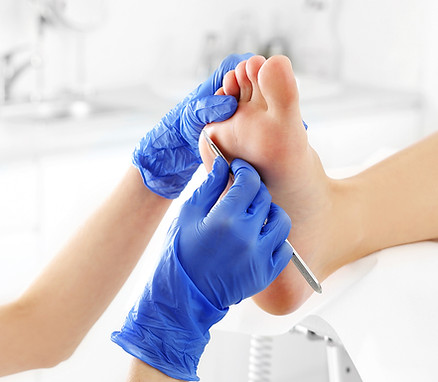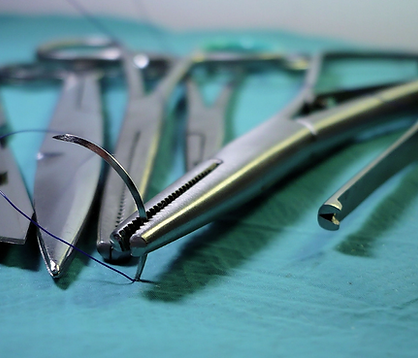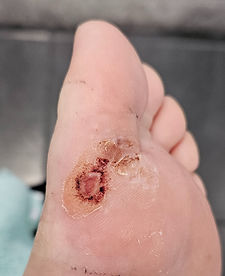
Welcome to our
Warts (Verrucae Pedis) Info Hub!
Are you experiencing discomfort on the bottom of your foot? It could be Verrucae Pedis, commonly known as Plantar Wart. Explore the information below to understand the condition and discover various treatment options available.

Before surgical removal

After surgical removal
Understanding Verrucae Pedis (Plantar Wart)
Verrucae Pedis is a viral growth caused by Human Papilloma Virus (HPV), typically found on the bottom of the foot. This condition is more prevalent in areas with skin breaks, tiny cuts, or weakened spots on the foot. Children and the elderly, especially those with weakened immune responses, are more susceptible to Verrucae Pedis.
Signs and Symptoms
-
Small, rough, grainy growth on the bottom of the foot
-
Hard, thickened skin over a well-demarcated spot
-
Black pinpoints or mosaic appearance
-
Pain or tenderness upon weight-bearing
When to Seek Treatment
In many cases, a healthy individual's immune system can naturally combat the viral infection. However, if symptoms persist or worsen, it may be advisable to explore treatment options.
Treatment Options
Our clinic treats warts using mechanical debridement with topical applications as well as surgical excisions for more complicated cases.
Mechanical Debridement with Topical Applications
This approach involves removing the wart through mechanical means and applying topical solutions. Common applications include:
-
Salicylic Acid: A topical treatment that breaks down the wart tissue, facilitating its removal. Regular application over several weeks is typically recommended.
-
Silver Nitrate: Applied topically to the wart to promote its removal. Acts as a caustic agent, aiding in the destruction of the wart tissue.
-
Phenol: Applied topically to the wart to promote its removal. Acts as a caustic agent, aiding in the destruction of the wart tissue.
Mechanical debridement is initially recommended weekly, then adjusted to fortnightly as needed. Patients are expected to apply over-the-counter topical treatments between visits. If there is no improvement, surgical excision will be considered.


Surgical Excision
For more complex cases, surgical excision is considered for precise and complete wart removal:
-
Procedure:
-
The wart is surgically excised by a healthcare professional.
-
Ideal for large, cluster or persistent warts.
-
-
Effectiveness:
-
Surgical excision ensures the complete removal of the wart.
-
With proper post-operative care, most patients achieve 50% healing within one week and are pain-free by 1.5 weeks. We will ensure the wound is completely healed prior to discharge from the clinic.
Several other treatment modalities are available for plantar warts such as cryotherapy, needling and microwave therapy.
However, in our experience, their pain-to-success ratio is less favorable compared to mechanical debridement or surgical excision. If your wart has persisted for over three months despite treatment, we recommend surgical excision as the most effective and efficient option.
Case Study

Before Surgery

2 weeks after surgery

3 months after surgery
12-Year Wart Case Resolved with Surgery
After 12 years of persistent warts and failed treatments—including pharmacy products, Upton’s paste, SWIFT, Cantharidin, and multiple podiatry visits—this patient was finally recommended to our clinic. With all conservative options exhausted, surgical excision was performed.
The result? Pain-free and wart-free at last! No referral required, just book in!